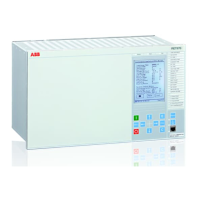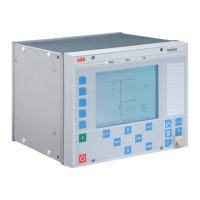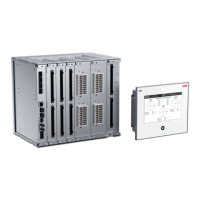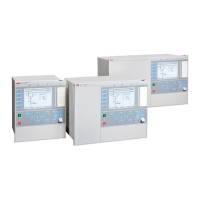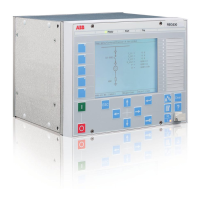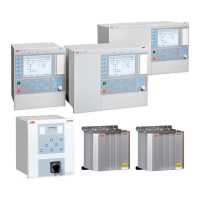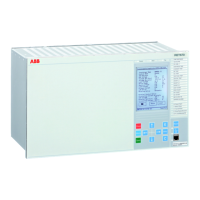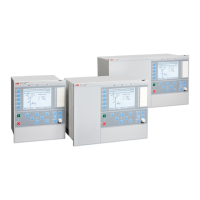25.1.6.1 Transformer differential protection
SEMOD54689-4 v4
The current transformers must have a rated equivalent limiting secondary e.m.f. E
al
that is larger than the maximum of the required rated equivalent limiting secondary
e.m.f. E
alreq
below:
sn
R
al a lreq CT L
2
pn n
nt
I
S
E E 30 I R R
I I
³ = × × + +
æ ö
×
ç ÷
è ø
EQUATION1672 V1 EN-US (Equation 516)
sn
R
al a lre q CT L
2
pn n
tf
I
S
E E 2 I R R
I I
³ = × × + +
æ ö
×
ç ÷
è ø
EQUATION1673 V1 EN-US (Equation 517)
where:
I
rt
The rated primary current of the power transformer (A)
I
tf
Maximum primary fundamental frequency current that passes two main CTs and
the power transformer (A)
I
pr
The rated primary CT current (A)
I
sr
The rated secondary CT current (A)
I
n
The nominal current of the protection IED (A)
R
ct
The secondary resistance of the CT (W)
R
L
The resistance of the secondary wire and additional load (W). The loop
resistance containing the phase and neutral wires must be used for faults in
solidly
grounded
systems. The resistance of a single secondary wire should be
used for faults in high impedance grounded systems.
S
R
The burden of an IED current input channel (VA). S
R
=0.020
VA/channel for I
r
=1
A and S
R
=0.150 VA/channel for I
r
=5 A
In substations with breaker-and-a-half or double-busbar double-breaker arrangement,
the fault current may pass two main CT
s for the transformer dif
ferential protection
without passing the power transformer. In such cases and if both main CTs have equal
ratios and magnetization characteristics the CTs must satisfy equation
516 and
equation 518.
Section 25 1MRK 504 163-UUS A
Requirements
988 Transformer protection RET670 2.2 ANSI
Application manual
